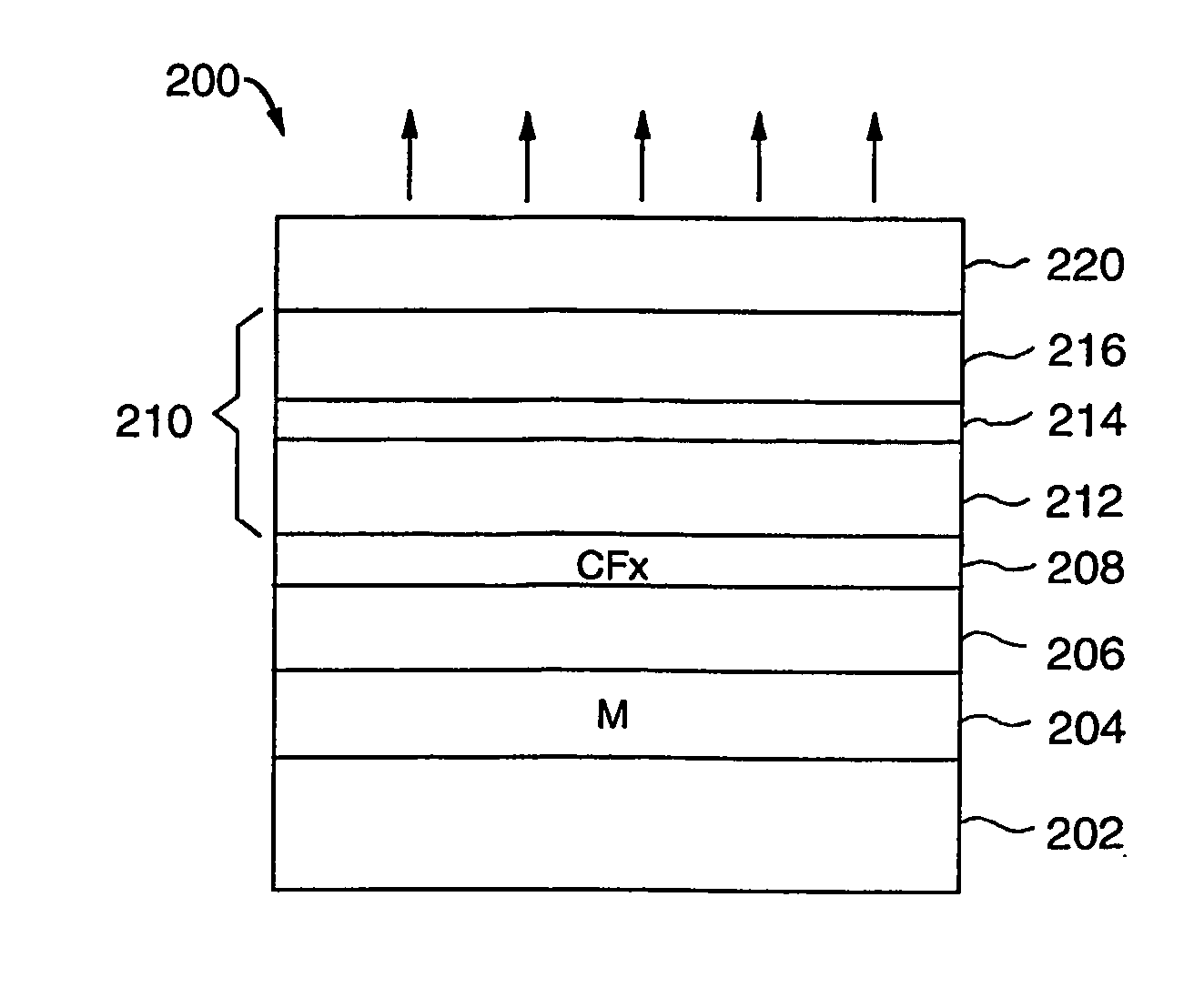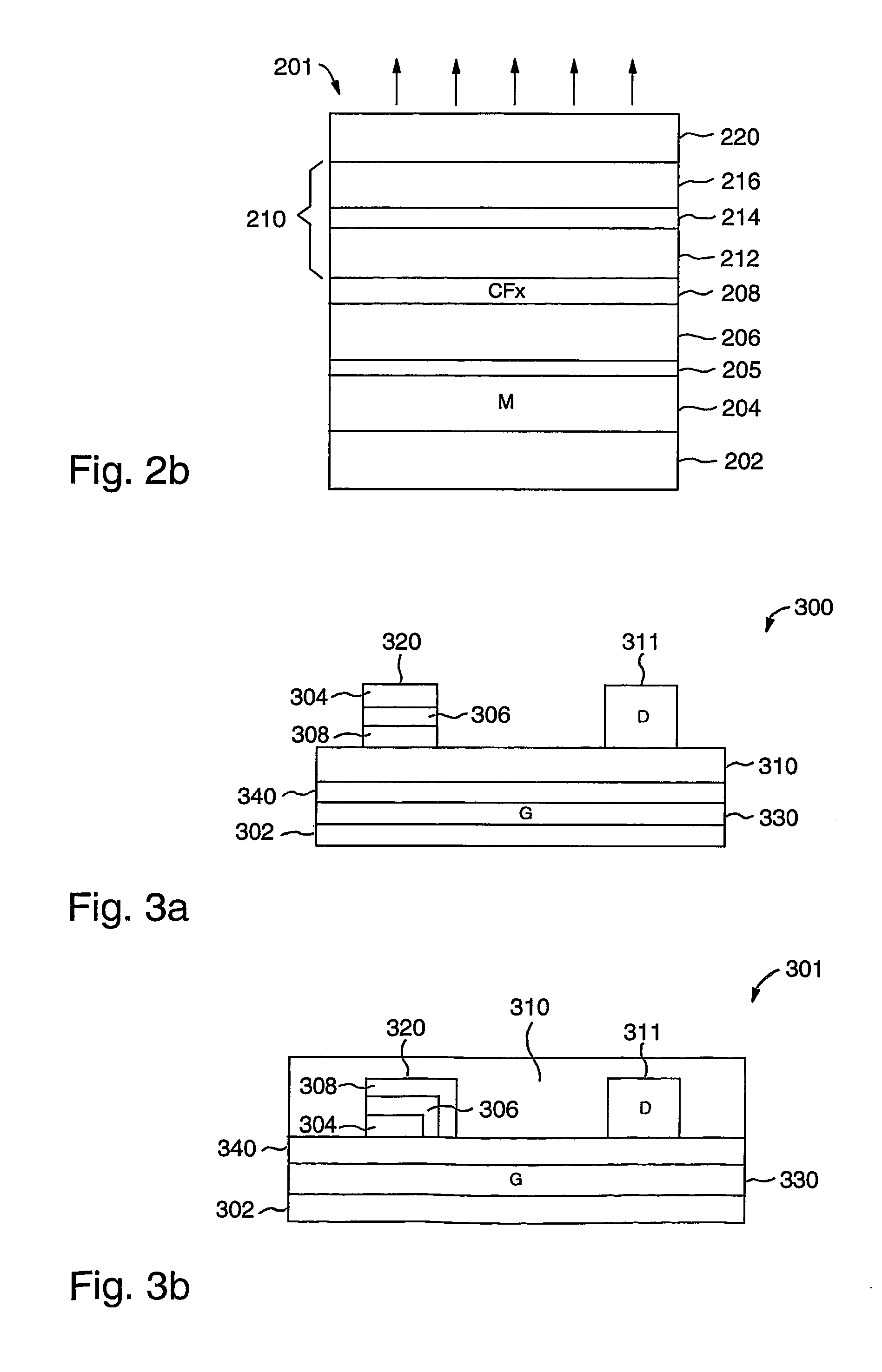Electrode structure for electronic and opto-electronic devices
a technology of optoelectronic devices and electronic devices, applied in the direction of electroluminescent light sources, organic semiconductor devices, thermoelectric devices, etc., can solve the problems of limiting the reliability and lifetime of oleds, the remaining performance limitation of oleds is the electrode, and limiting the reliability of oleds. , to achieve the effect of reducing the reaction advantageously, avoiding oxidation processes, and excellent properties and characteristics
- Summary
- Abstract
- Description
- Claims
- Application Information
AI Technical Summary
Benefits of technology
Problems solved by technology
Method used
Image
Examples
example
[0077] The following example is presented for further understanding. For purposes of brevity, the materials and the layers formed therefrom will be abbreviated as follows: [0078] ITO: indium-tin-oxide [0079] NPB: 4,4′-bis-[N-(1-naphthyl)-N-phenylamino]-bi-phenyl (hole-transporting layer) [0080] Alq: tris (8-quinolinolato-N1, 08)-aluminum (electron-transporting layer; functioning here as a combined light-emitting layer and electron-transporting layer) [0081] MgAg: magnesium silver at a ratio of 10:1 by volume
[0082] An organic light-emitting structure was constructed in the following manner: [0083] 1a) evaporation of Ti on glass (substrate) [0084] 1b) evaporation of Al on Ti / glass [0085] 1c) deposition of ITO, optional a buffer layer of Pt or Ti can be formed between Al and ITO [0086] 2) insertion of the structure in a plasma etch / deposition machine for [0087] a) oxygen plasma treatment for cleaning and oxidation (also for ITO); [0088] b) deposition of a 3 nm fluorocarbon polymer by ...
PUM
| Property | Measurement | Unit |
|---|---|---|
| thickness | aaaaa | aaaaa |
| work function | aaaaa | aaaaa |
| work function | aaaaa | aaaaa |
Abstract
Description
Claims
Application Information
 Login to View More
Login to View More - R&D
- Intellectual Property
- Life Sciences
- Materials
- Tech Scout
- Unparalleled Data Quality
- Higher Quality Content
- 60% Fewer Hallucinations
Browse by: Latest US Patents, China's latest patents, Technical Efficacy Thesaurus, Application Domain, Technology Topic, Popular Technical Reports.
© 2025 PatSnap. All rights reserved.Legal|Privacy policy|Modern Slavery Act Transparency Statement|Sitemap|About US| Contact US: help@patsnap.com



